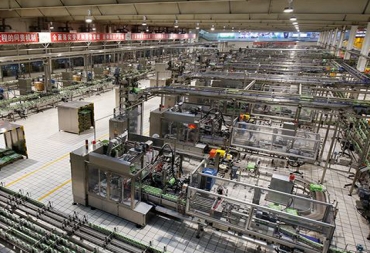Types of Hose Clamps
2023-04-14 10:30:57
Hose Clamp
A hose clamp is a mechanical device that secures a hose to a fitting, ensuring no leakage. They are available in a wide range of sizes, types and materials, and can be used to solve a variety problems.
Hose clamps are an essential part of many systems in the automotive, beverage, and industrial industries. They can be purchased as reusable or single-use devices, and are usually made of metal or plastic.
Worm Clamps in Stainless Steel
If you want a hose clip that is resistant to corrosion, stainless steel may be the best option. Marsh Fasteners offers a variety of hose clips made from 304 stainless. These hose clips are resistant to a wide range temperatures and are perfect for marine environments.
ABA Safeseal Technology (tm)
These hose clamps are designed to seal a wide range of applications and are ideal for chemical plants, bleaching industries, oil and gas production, offshore facilities, harbor equipment and boats. These clamps are also an environmentally friendly and cost-effective alternative to other products available on the market.
Ear Clamps
There are two types of hose clips: ear and a wire clamp. While ear clamps are a one-time use device, wire clamps are reusable. These hose clips are typically made of stainless steel but they can also be found in brass or plastic.
These are designed to be used with flexible, soft or rubber-covered hoses. They have an accessible wormdrive that reduces the risk of damaging soft materials. They can be installed with standard hand tools. They are an economical and eco-friendly solution for a variety of applications.
Fabric Lined Air Hose Clamp
Fabric lined air hoses are hoses that have a synthetic rubber inner tubing, a cotton reinforced reinforcement, and a rubber impregnated wire braid. The hose is available in sizes to carry up to 3,000 psi pressures.
The hose is used to transport fuel, hydraulic fluids and coolants. The hose can also be used in water and wastewater treatment facilities.
Generally, the service life of a hose is about 1 to 20 years depending on its composition, application, and environment. During the inspection, look for signs of deterioration such as cracks or hardening. Also, check if there is excessive "cold-flow" or lack of flexibility.
Mis-application and Kinking
A common cause of failure is misuse. Improperly sized or tampered with hose and fittings can lead to premature failure, such as leakage, rupture, or separation of the tube and cover from the inner tube. A change in the pressure rating of the hose, excessive heat, or temperature exposure can also cause the hose to break down.
If you are not sure which hose and fittings to use, consult the manufacturer's recommendations before purchasing. This will ensure that you are using the right components for your application and will help to maximize your hose and fittings' lifespan.
When sizing and tightening hose and pipe clamps, follow the torque specifications provided by the manufacturer. Overtightening may cause thread damage and early failure.